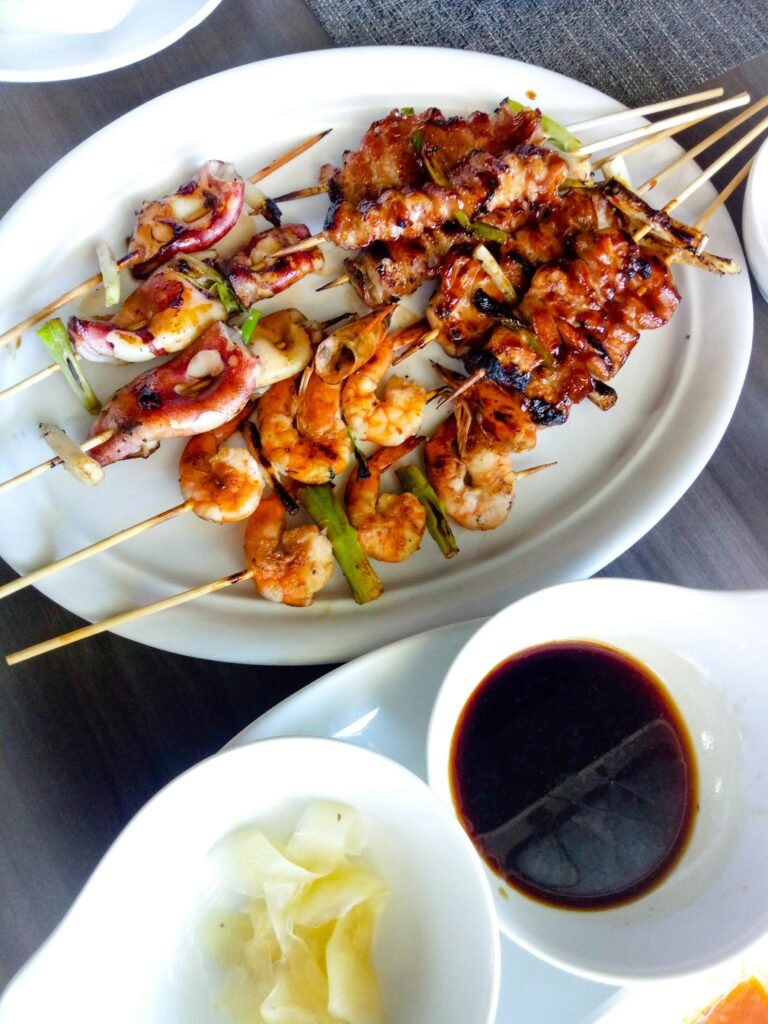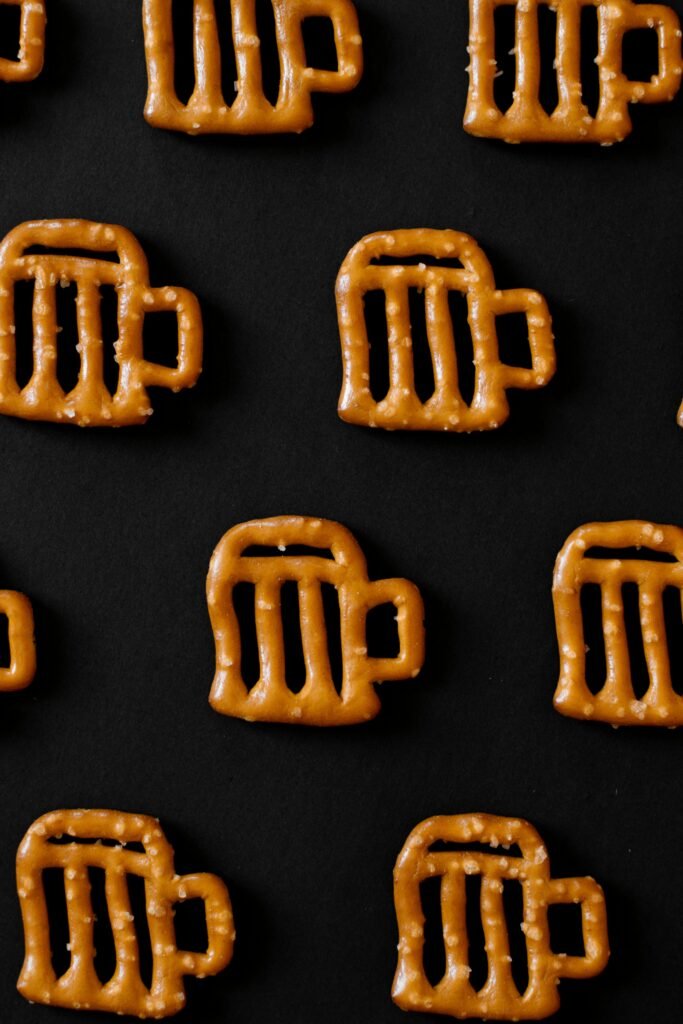You’re always striving to provide the best for yourself and your loved ones, and ensuring the quality of your food storage is a key aspect of that. In this article, you’ll discover expert recommendations that will help you maintain the freshness and safety of your stored food. By following these tips, you can have peace of mind knowing that your provisions will remain in top-notch condition, ready for whenever you need them.

This image is property of images.pexels.com.
Proper Food Storage Containers
Proper food storage containers are essential for ensuring the freshness and quality of your food. When choosing containers, it’s important to consider factors such as durability, airtightness, and the material they are made from. Opt for containers that are specifically designed for food storage and are made of high-quality materials that won’t leach harmful chemicals into your food.
Choose the Right Containers
When it comes to food storage containers, not all are created equal. It’s crucial to choose containers that are suitable for the type of food you are storing. For example, if you’re storing liquids or soups, opt for containers with tight-fitting lids and sturdy construction to avoid any leakage. For dry ingredients, such as grains or legumes, airtight containers with secure seals will help maintain their freshness for longer periods.
Use Airtight Containers
Airtight containers are key to keeping your food fresh for extended periods. They create a barrier against moisture, air, and pests, which can all contribute to spoilage. Make sure the lids of your containers fit tightly to prevent any air from entering. This will help preserve the taste, texture, and nutritional value of your food.
Avoid Plastic Containers with BPA
While plastic containers are commonly used for food storage, it’s important to avoid those that contain Bisphenol A (BPA). BPA is a chemical often found in plastic containers and can leach into food, posing potential health risks. Look for BPA-free containers or opt for alternative materials such as glass or stainless steel, which are safer options for food storage.
Label Containers with Dates
To keep track of the freshness of your stored food, it’s a good practice to label containers with dates. This allows you to easily identify when the food was stored and helps you prioritize consumption based on freshness. By following a “first in, first out” method, you can ensure that older food is consumed before newer additions, minimizing food waste.
Temperature Control
Proper temperature control is crucial for maintaining food safety and preserving the quality of your stored food. Following recommended temperature guidelines ensures that perishable items remain fresh, while frozen food stays safe to consume.
Keep Food in the Proper Temperature Range
Different types of food require specific temperature ranges to stay fresh and safe. For example, most perishable foods, including dairy, meat, and poultry, should be stored at or below 40°F (4°C) in the refrigerator. On the other hand, frozen food should be kept at 0°F (-18°C) or below to maintain its quality and prevent the growth of harmful bacteria.
Refrigerate Perishables
Perishable foods like fruits, vegetables, cooked meat, and leftovers should be promptly refrigerated to slow down bacterial growth. It’s important to store perishables in the refrigerator within two hours of being cooked or purchased. To maintain their freshness, store them in airtight containers or wrap them tightly with plastic wrap or aluminum foil.
Store Frozen Food at Appropriate Temperatures
Frozen food should be stored at temperatures of 0°F (-18°C) or below to prevent the growth of bacteria and maintain its quality. Make sure your freezer is set to the proper temperature and regularly check that it remains functioning optimally to avoid any thawing or temperature fluctuations.

This image is property of images.pexels.com.
Organize and Rotate
Proper organization and rotation of stored food can help prevent waste and ensure that older items are used before newer ones. Following a first-in, first-out (FIFO) method and keeping similar items together can save you money and reduce the risk of food spoilage.
Practice First-In, First-Out (FIFO) Method
The FIFO method involves organizing your stored food in a way that ensures older items are used before newer ones. When purchasing or storing new food, place it behind the older items, so they are visible and used first. This simple practice helps prevent food from sitting for too long and going bad.
Keep Similar Items Together
Organizing your food storage by grouping similar items together can help you locate specific items more easily and prevent any cross-contamination. Keep different types of food in separate areas or use designated shelves or containers for specific categories like snacks, canned goods, or spices. This organization also helps you maintain an inventory of what you have, reducing the chances of buying unnecessary duplicates.
Regularly Clean and Declutter
To maintain a hygienic and well-organized food storage area, it’s important to regularly clean and declutter. Wipe down shelving units, cabinets, and containers, removing any crumbs or spills that might attract pests and cause contamination. Regularly go through your stored food and discard any expired or spoiled items. Keeping your storage area clean and decluttered helps ensure food safety and makes it easier to maintain an organized system.
Avoid Cross-Contamination
Cross-contamination occurs when harmful bacteria or pathogens from one food item are transferred to another, potentially causing foodborne illnesses. Preventing cross-contamination is crucial for food safety, and proper storage practices play a significant role in reducing the risk.
Separate Raw and Cooked Foods
To avoid cross-contamination, it’s essential to keep raw and cooked foods separated. Raw meats, poultry, and seafood should be stored in sealed containers or wrapped securely to prevent their juices from coming into contact with other foods. Place raw foods on lower shelves or in separate compartments to minimize any potential drips or leakage onto other items.
Store Meat and Seafood Properly
Meat and seafood are prone to spoilage and should be stored appropriately to maintain their quality and prevent cross-contamination. Always store these items in sealed containers or wrap them tightly in plastic or foil. To further reduce the risk of cross-contamination, consider placing them in a separate drawer or section of your refrigerator designated solely for raw meat and seafood.
Use Separate Cutting Boards and Utensils
Using separate cutting boards and utensils for different types of food is another effective way to prevent cross-contamination. Designate specific cutting boards for raw meats, fruits, vegetables, and other food categories to avoid the transfer of bacteria or allergens. Similarly, use different utensils for handling raw and cooked foods to minimize the risk of contamination.

This image is property of images.pexels.com.
Proper Handling of Leftovers
Leftovers can be a convenient and cost-effective way to enjoy meals but improper handling can lead to foodborne illnesses. Following proper guidelines for cooling, storing, and consuming leftovers ensures their safety and quality.
Cool Leftovers Quickly
To prevent bacterial growth, it’s important to cool leftovers quickly before storing them. Divide larger portions into smaller, shallower containers, as they cool more rapidly. Place the containers in an ice bath or place them in the refrigerator, uncovered, until they have reached a safe temperature (below 40°F/4°C). Rapid cooling helps inhibit the growth of bacteria that can cause foodborne illnesses.
Store Leftovers in Shallow Containers
Storing leftovers in shallow containers not only helps cool them quickly but also allows for more efficient reheating later. Shallow containers have a larger surface area, promoting even cooling and preventing the center of the leftovers from staying warm for too long. This reduces the risk of bacterial growth, as well as helps maintain the quality and taste of the leftovers.
Consume Leftovers within 3-4 Days
While leftovers can be convenient, it’s important to consume them within a safe timeline. Leftovers should be consumed within 3-4 days to ensure their safety. Labeling your containers with dates can help you keep track of when the leftovers were stored, allowing you to monitor their freshness and prioritize consumption accordingly. If in doubt, it’s best to discard leftovers rather than risk consuming unsafe food.
Understand Food Spoilage Signs
Being able to recognize the signs of food spoilage is crucial for ensuring food safety. By regularly inspecting your stored food and being aware of certain indicators, you can prevent the consumption of potentially harmful or spoiled items.
Examine Food for Mold, Off Odor, or Discoloration
Mold, off odors, and unusual discoloration are common signs of food spoilage and potential bacterial or fungal growth. Inspect your stored food regularly, paying attention to any visible signs that indicate spoilage. If you notice any mold growth, foul odors, or drastic color changes, it’s best to discard the affected food immediately to prevent any risk of foodborne illnesses.
Check for Puffed or Leaking Containers
Canned or packaged food with puffed or bulging lids and leaking containers is a strong indication of spoilage. These signs could potentially indicate bacterial contamination or a compromised seal, allowing harmful pathogens to enter. It’s important to discard any swollen or leaking containers to avoid consuming unsafe food.
Discard Food if in Doubt
If you’re unsure about the quality or safety of a particular food item, it’s always better to err on the side of caution and discard it. Consuming spoiled or contaminated food can lead to food poisoning, which can have serious health consequences. Trust your instincts and when in doubt, throw it out.
Optimal Storage for Different Foods
Different types of food require specific storage conditions to maintain their freshness and quality. By following optimal storage practices for various food categories, you can maximize the shelf life of your ingredients and enjoy them at their best.
Store Grains and Legumes in Airtight Containers
Grains and legumes, such as rice, quinoa, lentils, and beans, should be stored in airtight containers to keep them free from moisture, pests, and air exposure. These ingredients are prone to becoming stale or attracting pantry pests if not stored properly. Airtight containers help maintain their texture, flavor, and nutritional value, allowing you to enjoy them for longer periods.
Keep Dairy Products Refrigerated
Dairy products, including milk, yogurt, cheese, butter, and sour cream, should be stored in the refrigerator to slow down bacterial growth and maintain their freshness. Make sure to check expiration dates and consume them before they spoil. Proper temperature control is essential for dairy products, as they can spoil quickly if not refrigerated at or below 40°F (4°C).
Wrap Leafy Vegetables in Paper Towels
Leafy vegetables such as lettuce, spinach, and herbs require specific storage techniques to prevent wilting and maintain their crispness. After washing and drying the leaves, wrap them loosely in paper towels before storing them in a resealable bag or container. This helps absorb excess moisture and keeps the vegetables fresh for longer.
Proper Storage for Fruits and Vegetables
Proper storage of fruits and vegetables ensures their longevity and helps maintain their flavor and nutritional value. Different types of produce have specific storage requirements to prevent spoilage and preserve freshness.
Store Fruits Separately from Vegetables
Fruits naturally release ethylene gas, which can accelerate the ripening process and lead to spoilage in certain vegetables. To prevent this, it’s best to store fruits separately from vegetables. If space allows, consider using different drawers or compartments in your refrigerator to keep fruits and vegetables apart. Alternatively, you can use breathable produce bags for storing fruits and vegetables together.
Avoid Storing Fruits in the Fridge
While refrigeration is suitable for many fruits, certain fruits are best stored at room temperature to maintain their flavor and texture. Tropical fruits, such as bananas, mangoes, and pineapples, are examples of fruits that should not be refrigerated. Cold temperatures can alter the taste and texture of these fruits, so it’s best to store them outside the refrigerator.
Use Perforated Bags for Certain Produce
Some fruits and vegetables require adequate airflow to prevent moisture buildup and extend their shelf life. For produce like mushrooms, berries, and grapes, it’s best to store them in perforated bags to allow proper ventilation and prevent the growth of mold. This helps maintain their quality and prevents premature spoilage.
Maintaining Food Storage Hygiene
Food storage hygiene plays a vital role in preventing contamination and ensuring the safety of your stored food. By practicing proper hygiene measures, you can reduce the risk of foodborne illnesses and maintain a clean and safe storage environment.
Wash Hands Before Handling Food
One of the most basic yet crucial hygiene practices is washing your hands thoroughly before handling any food. Wash your hands with soap and warm water for at least 20 seconds, paying attention to areas like fingertips and between fingers. This helps eliminate bacteria and prevents contamination during the food handling process.
Clean Storage Areas Regularly
Keeping your food storage areas clean is essential for maintaining a healthy and safe environment. Regularly clean shelving units, pantry spaces, and refrigerator compartments to remove any food particles, spills, or crumbs that can attract pests or lead to bacterial growth. Use mild detergent or vinegar solutions to sanitize surfaces, and always follow the manufacturer’s instructions for cleaning specific appliances.
Monitor and Control Pest Infestations
Pests can easily infiltrate your food storage areas and contaminate your food. Regularly inspect your storage areas for any signs of pests, such as droppings, gnaw marks, or chewed packaging. Seal any cracks or openings that pests might use as entry points and consider using traps or other pest control measures to prevent infestations. Keeping your storage areas clean, organized, and free from spills is also an effective way to discourage pests from invading.
Maximizing Shelf Life with Preservatives
Preservatives can help extend the shelf life of certain foods by inhibiting the growth of bacteria, yeasts, and molds. While there are natural food preservatives available, it’s important to use them judiciously and consider alternative storage methods for long-term preservation.
Use Natural Food Preservatives
Natural preservatives, such as citrus juice, vinegar, salt, and sugar, can help inhibit microbial growth and extend the shelf life of certain foods. They can be used in pickling, canning, or fermenting processes. However, it’s important to follow recommended recipes and guidelines for preserving food to ensure safety and prevent spoilage.
Vacuum Seal Foods
Vacuum sealing is an effective method for extending the shelf life of foods by removing air and inhibiting the growth of spoilage-causing microorganisms. This technique involves placing food in a vacuum-sealed bag and using a vacuum sealer to remove the air before sealing it tightly. Vacuum-sealed foods can be stored in the refrigerator or freezer to maintain their quality for longer periods.
Consider Canning or Fermenting Techniques
Canning and fermenting are traditional techniques that have been used for centuries to preserve food. Canning involves cooking and sealing food in jars or cans, while fermenting uses the natural process of microbial conversion to produce beneficial acids, alcohol, or gases. Both methods can help extend the shelf life of a wide range of foods, ensuring that they remain safe and flavorful for extended periods.
In conclusion, proper food storage practices are essential for maintaining the freshness, safety, and quality of your stored food. By choosing the right containers, practicing temperature control, organizing and rotating your food, avoiding cross-contamination, handling leftovers appropriately, and understanding food spoilage signs, you can ensure that your stored food remains safe and enjoyable to consume. Additionally, optimizing storage for different types of foods, maintaining food storage hygiene, and considering preservation techniques allow you to maximize the shelf life of your ingredients and minimize food waste. With these expert recommendations, you can confidently store your food in a way that promotes both safety and longevity.
